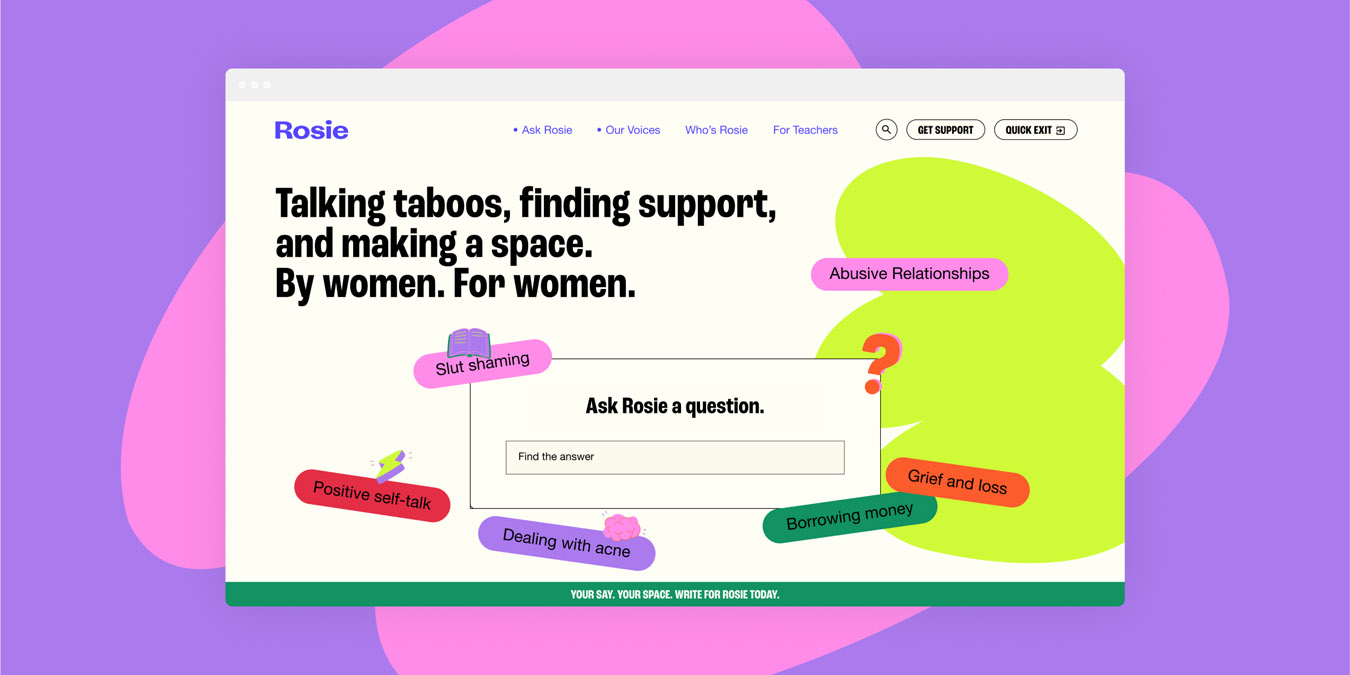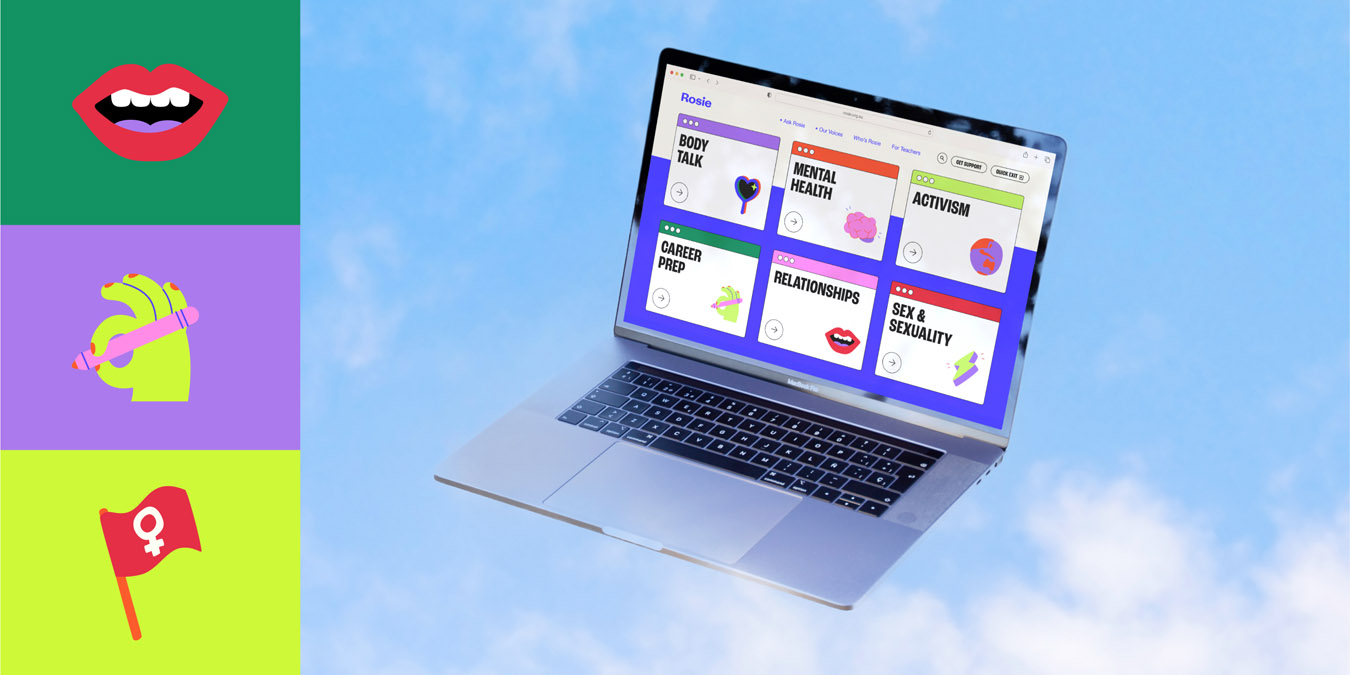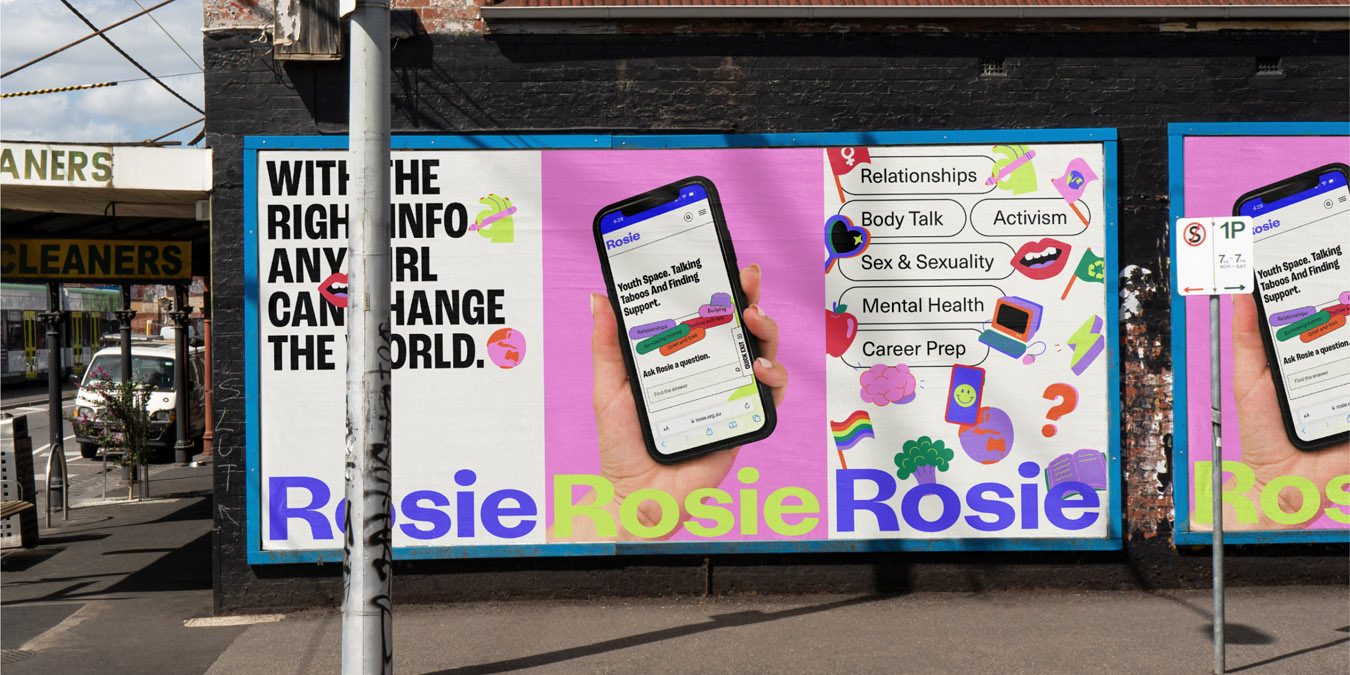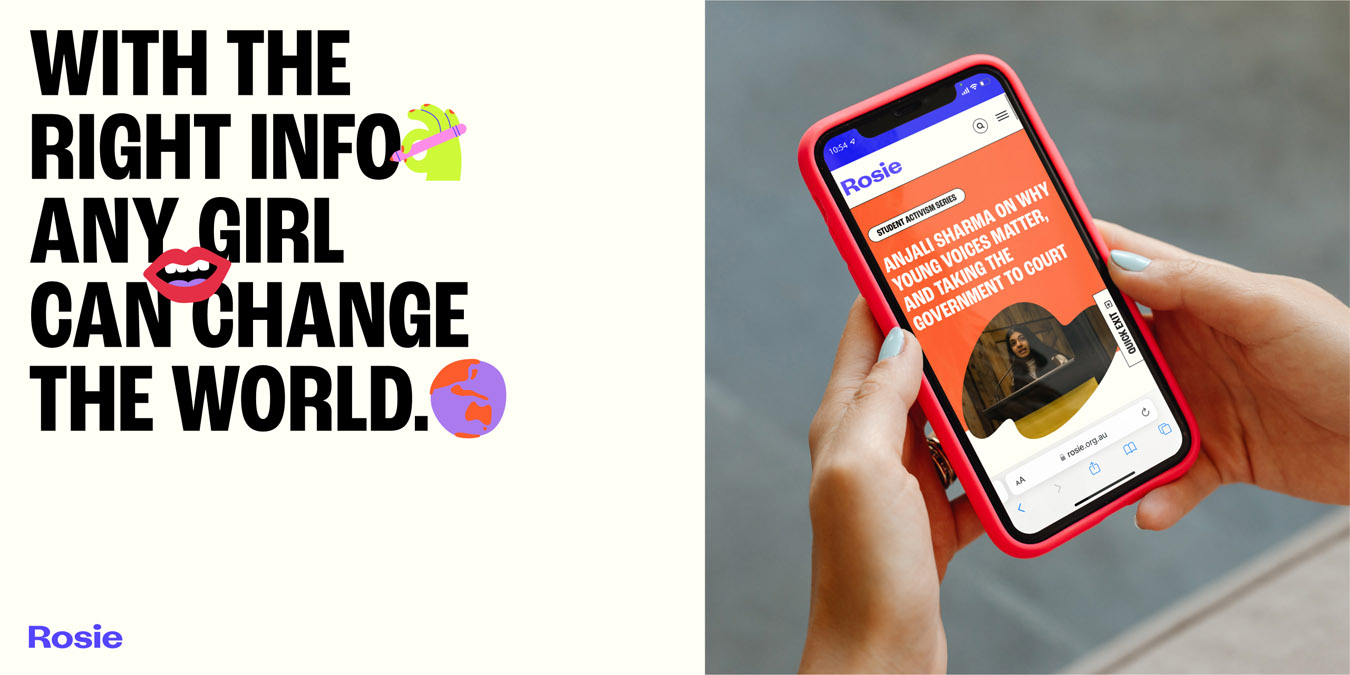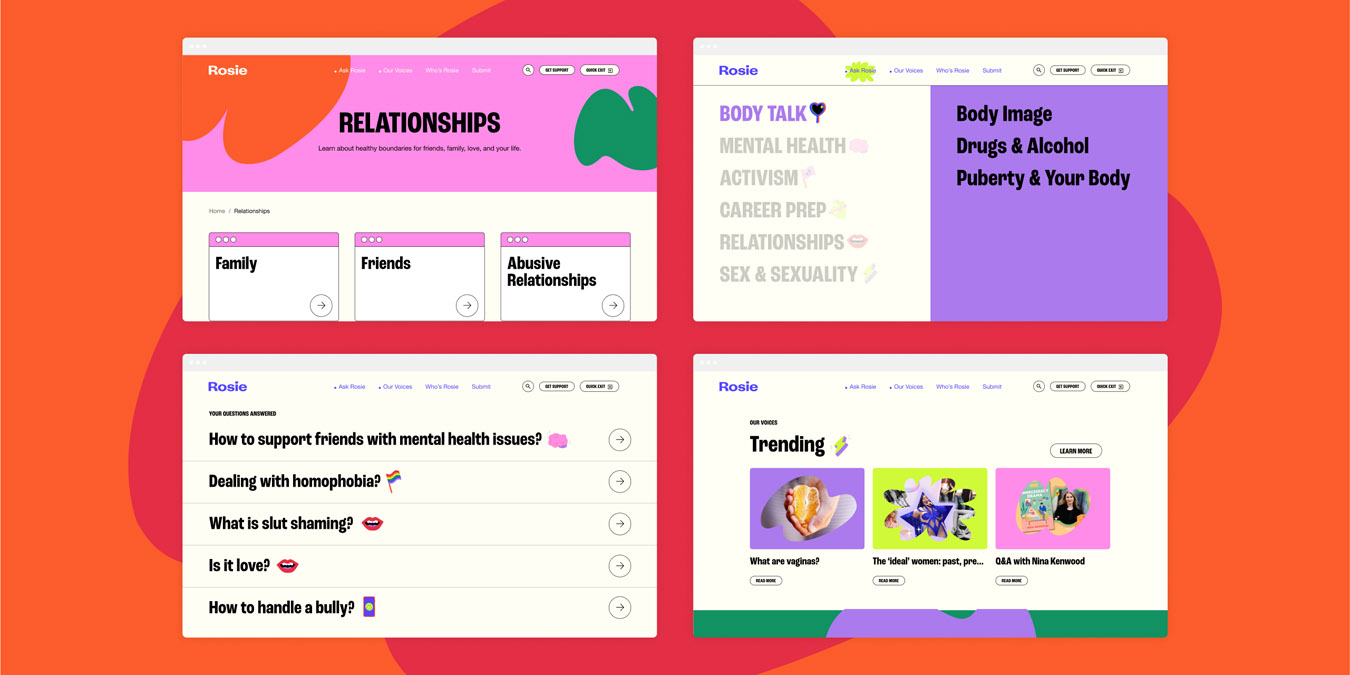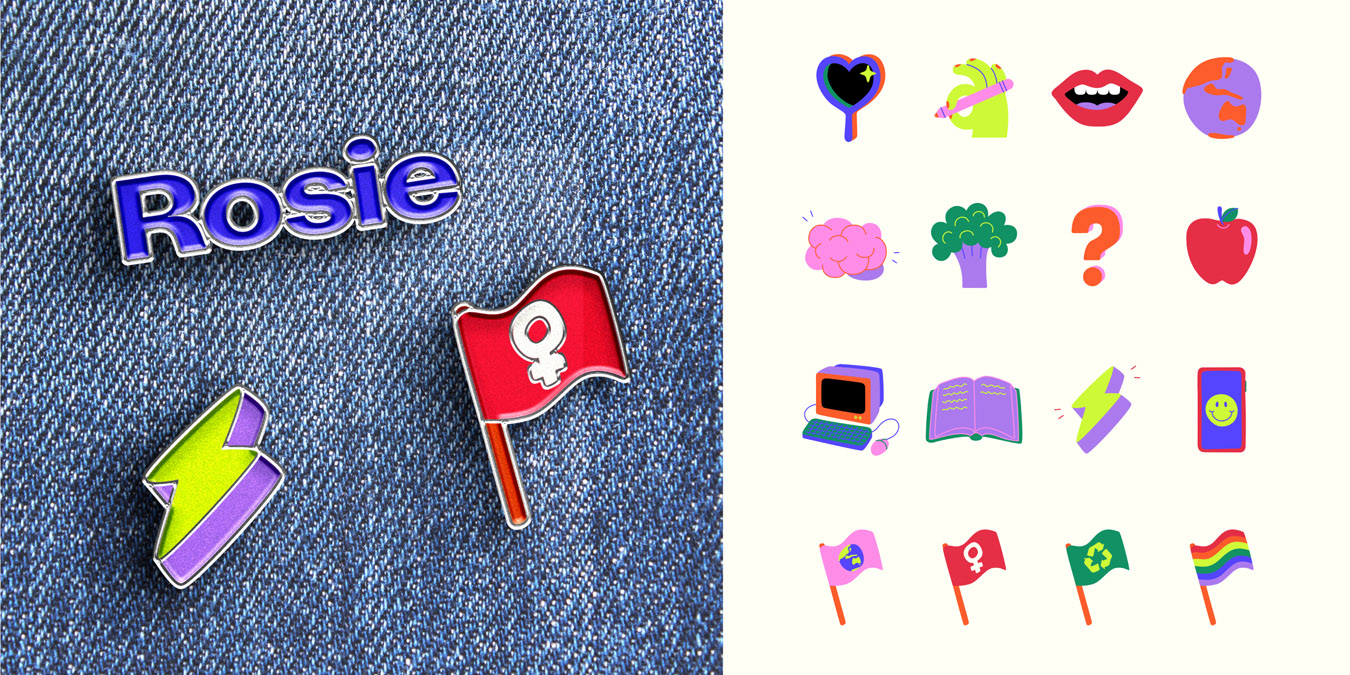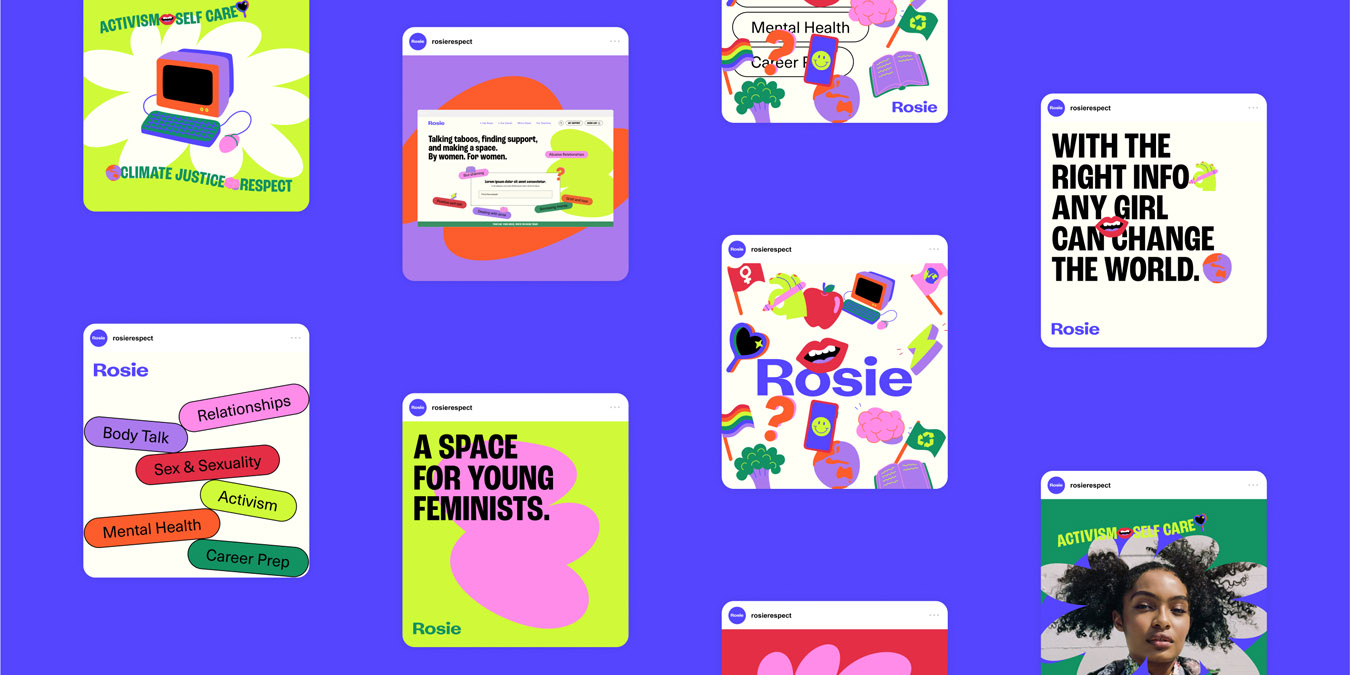A digital environment users gravitate towards.
Our all-female in-house team designed Rosie as an engaging digital space tailored to its users. During the discovery phase, we conducted co-design workshops with teenagers aged 14-18. Their insights and ideas were essential in shaping the needs, aesthetics, and nuances of the brand and platform.
Workshop participants identified a need to not look like a government affiliate, and to ensure the communication design redefined what ‘femininity meant’, reflecting a new definition across touch points: to be bold, loud, empowering and unafraid to speak.
Throughout the discovery phase we took a deep dive into trending online cultures amongst teenagers, utilising trending hashtags and self-generated content from TikTok and SnapChat.
A space that feels inclusive, and engaging and truly reflects our findings visually.
From the discovery phase we identified four key visual themes that led our conceptualisation phase; activism posters, self-care consumer products, Y2K and neon trends. Our design team ideated several concepts that were then vetted by our UX designers for AA digital compliance.
Putting it to our audience, again and again
Once two concepts were finalised showing the new ‘Rosie’ in situ across a digital platform, posters, and social channels we reengaged our youth cohort for feedback, and ultimately they picked the concept that represents their space today.
Addressing Our Secondary Audience
Rosie’s secondary audience is ‘teachers and educational decision-makers’. Rosie in the Classroom is a program of Rosie that assists teachers in talking about difficult topics. The program advocates for topics like sexting or respect in relationships to be incorporated into the curriculum so that all teenagers are aware of their rights and can encourage respect within their school community. These lesson plans are suitable for students in years 7-10.

